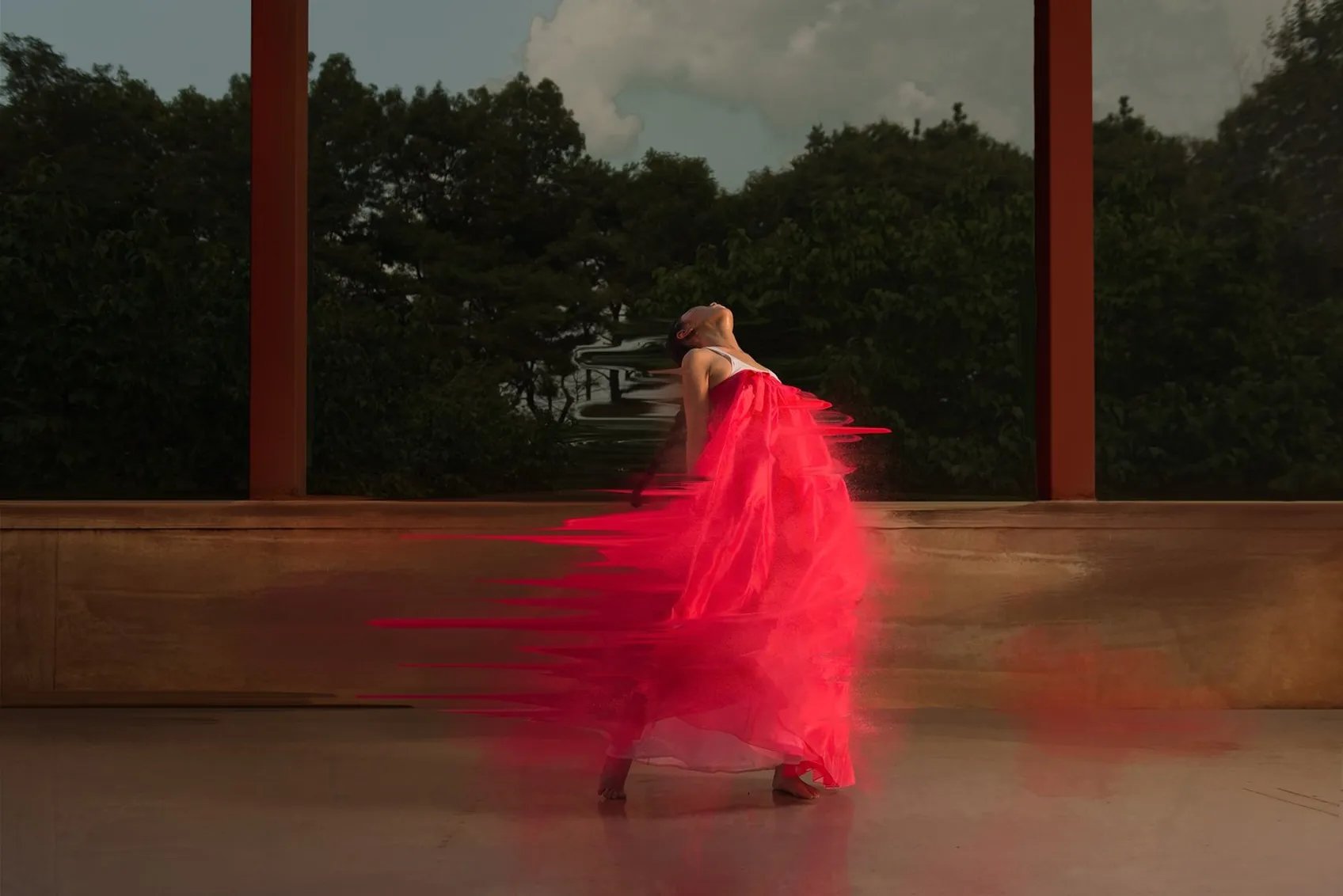
Songs Of The Inner Chamber
NAEBANG KASA
South Korea
2017
"Songs of the Inner Chamber" is a photographic and multidisciplinary project exploring contemporary expressions of gender in South Korea. During a three-month artistic residency, I created a series of images highlighting the most relevant gender issues against Korea's modern and traditional landscapes. This residency was a partnership between CALQ and the Museum of Modern and Contemporary Art of South Korea.
Gender equality and exploring identities that diverge from the heteronormative binary construct have been central to my artistic practice since 2003. I portray gender as a performative and socially constructed element of our identities by using dancers as subjects. In Korea, this exploration presented challenges that enriched my practice and deepened my understanding of gender in Korean and Asian cultures. Conversations about gender in Korea remain controversial. Though not an expert, I researched through books, statistics, and interviews with activists. This academic approach revealed that while women in South Korea have achieved high levels of educational and health equality, they face moderate economic equality and poor political equality.
"Songs of the Inner Chamber" does not single out South Korean society but aims to understand its uniqueness and extrapolate it to larger contexts, connecting with issues in the West and Latin America. These issues exist globally, and discussing them openly is a step towards equality.
Translating this research into images goes beyond mere illustration. I aim for my work to provoke thought and dialogue, not to serve a specific ideology. Researching how Korean artists like Lee Bul, Oh Ihnwan, and Choi Xoo Ang address these topics was crucial. Their work informed my aesthetics and approach.
The project was created in collaboration with local dancers, who used their experiences and dance training to interpret each topic through choreographic language. Each collaboration involved photographing interventions in public spaces through movement. Additional elements like costume, makeup, theatrical lighting, and pictorial elements highlighted the performative nature of the images.
Gender equality seems obvious to me. Who would be against women having the same opportunities as men? Unfortunately, many believe otherwise due to cultural, religious, or familial values that see these inequalities as natural. While we agree in principle that everyone should be equal, gender inequality is present everywhere, in various forms and degrees.
During my time in South Korea, I pondered how to create art about these topics without my cultural bias and male privilege interfering. The answer came to me in the silence: listen. Let the women and men tell their stories, grievances, unfulfilled potentials, and successes.
"This project reminded me why it is meaningful to keep dancing," one dancer said, struggling to fulfill her dreams and role as a mother and wife. After seeing an image of herself escaping a room through a window, she remarked, "Whenever I see this picture, it makes me feel relief. This picture is the same expression that I feel."
Another dancer expressed, "I want to show society that even though I'm in control of my body and my sexuality, I'm still a good Korean woman."
"Songs of the Inner Chamber" is about giving a voice to women who often go unheard, whose potential is stifled, and whose spirit is trampled by tradition and conformity. These images amplify their voices beyond their country, allowing them to express themselves freely through movement, creating visual poetry in unison.
Damian Siqueiros, Founder of Terra Sapiens Studio




























